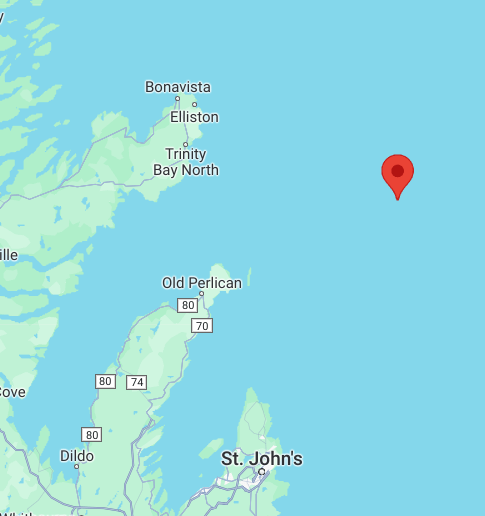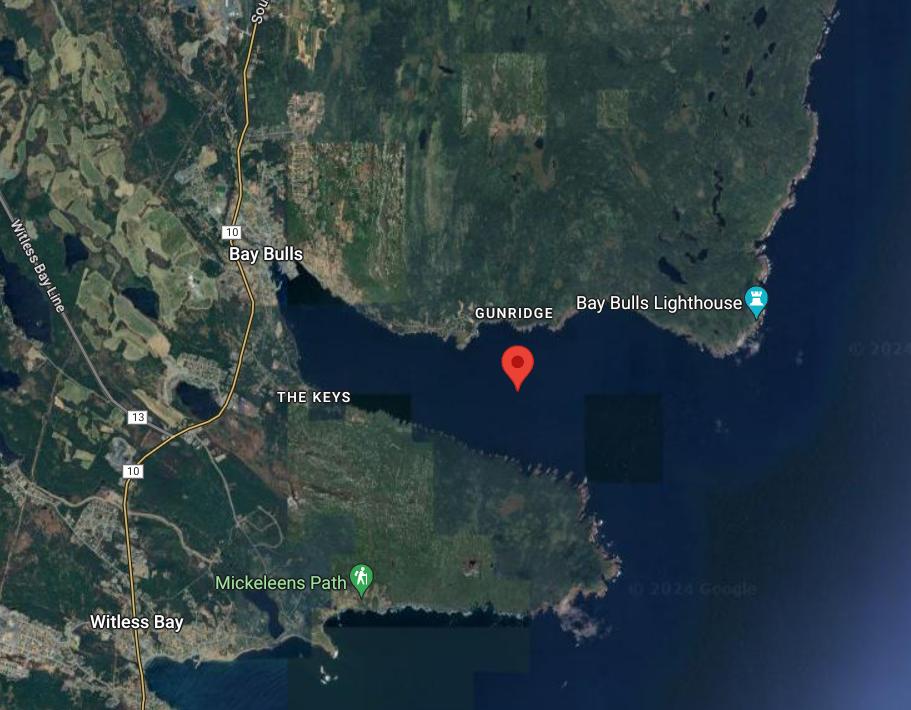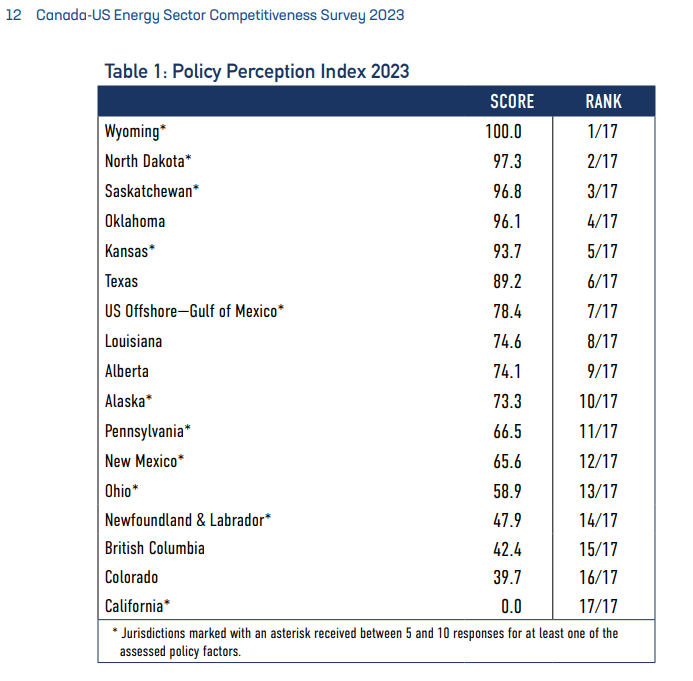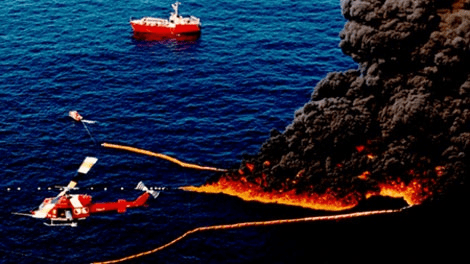
The DrillMAX has exited Bulls Bay and is en route to the Orphan Basin, where Exxon will drill a high potential exploratory well. As of this morning at ~1000 GMT, the drillship was headed north at 7.7 kts (see map).

Posted in Canada, drilling, Offshore Energy - General, tagged exploratory drilling, Exxon, Orphan basin, Stena Drillmax on May 18, 2024| Leave a Comment »

The DrillMAX has exited Bulls Bay and is en route to the Orphan Basin, where Exxon will drill a high potential exploratory well. As of this morning at ~1000 GMT, the drillship was headed north at 7.7 kts (see map).

Posted in Canada, drilling, Uncategorized, tagged Canada, geomagnetic storms, gps, oil drilling, solar storms on May 14, 2024| Leave a Comment »
Last year, there were reports that a level 3 geomagnetic solar storm rendered GPS signals unreliable and caused the brief suspension of at least one drilling operation in Canada (tweet below).

This weekend’s solar storms were level 5, the highest category (see chart below), but there have been no public reports to date of suspended drilling operations.

Posted in Canada, drilling, Offshore Energy - General, tagged Bay Bulls, exploratory drilling, Exxon, Orphan basin, Stena Drillmax on May 9, 2024| Leave a Comment »

According to rig locator data, the DrillMAX is moored in Bay Bulls, Newfoundland in preparation for transit to the site of Exxon’s high potential exploratory well in the Orphan Basin.

Posted in Canada, drilling, energy policy, Offshore Energy - General, tagged Algerich well, Argentina, Atlantic, Atlantic drilling, Atlantic OCS, Canada, Deepwater US Atlantic, Equinor, Newfoundland, Orphan basin, Pan America, Stena Drillmax, Valaris on April 30, 2024| Leave a Comment »

The Valaris DS-17 drillship is now on location to drill the Algerich-1 well for Equinor 315 km from Mar del Plata in 1527 m of water at Block CAN 100.


Concurrently, at the opposite end of the Pan American continents, the Stena DrillMAX is closing in on Exxon’s Orphan Basin location offshore Newfoundland to drill another high potential well.
Meanwhile, the US Atlantic is “wind-only,” despite high deepwater oil and gas potential. The late Paul Post, an esteemed colleague and the leading expert on the petroleum geology of the US Atlantic, believed the deepwater US Atlantic could contain >20 billion BOE. No other Pan American nation has completely closed its Atlantic margin to oil and gas exploration.
Can a nation with a debt of $35 trillion afford to ignore oil and gas resources that will remain in high demand for decades?
Posted in Canada, drilling, Guyana, Offshore Energy - General, tagged 3000 m, 500 km, Exxon, Newfoundland, Orphan basin, Stena Drillmax on April 24, 2024| Leave a Comment »

The DrillMAX is en route from Guyana to drill the Persephone wildcat well 500 km NE of Newfoundland in the highly prospective Orphan basin (3000 m water depth). This looks like the farthest from shore any well has been drilled in the Atlantic. The late spring date is prudent.This is definitely a well to watch because of the resource potential and difficult operating conditions.


Posted in Canada, energy policy, Guyana, Offshore Energy - General, tagged CNOOC, Exxon, Guyana, Hess, Nexen, Shell, Stabroek Block on March 25, 2024| 4 Comments »

State-owned Chinese National Offshore Oil Corp. (CNOOC) has now joined Exxon in filing an arbitration claim to establish their right over Hess’s share of the prolific Stabroek block offshore Guyana. How did CNOOC acquire its 25% share in the block?
So, an apparent afterthought in CNOOC’s takeover of Nexen has (1) proven to be extremely profitable, (2) given the company and the Chinese government leverage in the Exxon-Chevron supermajor dispute, and (3) opened the door for CNOOC to increase their interest in the massive Stabroek field.
Posted in California, Canada, energy policy, Regulation, Uncategorized, tagged California, Fraser Institute, North America, perception index, upstream oil and gas, Wyoming on March 13, 2024| Leave a Comment »
The Fraser Institute’s 2023 Canada-US Energy Sector Survey of senior executives in the upstream oil and gas sector provided data for assessing the competitiveness of US and Canadian jurisdictions. The resulting perception index (below) ranked Wyoming at the top with a score of 100.0 and California at the bottom with a score of 0.0. Perhaps one or more of the respondents have been mired in the California decommissioning quagmire. ☹


Posted in Offshore Energy - General, Canada, tagged Bay du Nord, CNLOPB, Equinor, Hebron, Hibernia, Newfoundland, resource estimates, Suncor, Terra Nova on February 22, 2024| Leave a Comment »

The CNLOPB has announced contingent resources of 340 million bbls for the Cambriol discovery which would be co-developed with 2 nearby discoveries as part of Equinor’s Bay du Nord project. Per CNLOPB estimates, this brings the Bay du Nord resource total to 1.132 billion bbls. Equinor has announced that 2 exploratory wells will be spudded this summer. Positive results would further strengthen the case for Bay du Nord development.
| contingent resources per CNLOPB (million bbls) | |
| Bay du Nord | 407 |
| Cappahayden | 385 |
| Cambriol | 340 |
| project area total | 1132 |
Meanwhile, Terra Nova production is ramping up after a long hiatus for FPSO refurbishment, remarkable Hibernia has produced more than double the original resource estimate of 520 million bbls and is still producing about 60,000-70,000 bopd, and Hebron is impressively producing about 120,000 bopd on average.
There is indeed reason for optimism about North America’s only Atlantic production in what is arguably the continent’s (world’s?) most challenging operating environment.

Posted in accidents, Canada, Offshore Energy - General, tagged artifacts, Charles Smith, Marine Institute, Newfoundland, Ocean Ranger on February 19, 2024| Leave a Comment »
Short answer: Yes!

A good article and video on the topic are linked. During my last visit to St. John’s, the late Charles Smith gave me an excellent tour of the Marine Institute that is featured in the video. The Institute is an outstanding training facility that has reduced operating risks offshore Newfoundland and elsewhere.
Posted in Canada, energy policy, Offshore Energy - General, tagged dispersants, Edward J. Tennyson, in situ burning, Newfoundland, NOBE, ohmsett, oil spill response, remote sensing, Valdez spill on October 6, 2023| Leave a Comment »


Edward J. Tennyson passed away last Friday at his Smith Mountain Lake, Virginia home. Ed worked in the Department of the Interior’s offshore program for more than 20 years, and arguably has done more than any single individual to advance oil spill response capabilities. A few of Ed’s many achievements:
Ed was an entertaining and informative speaker and was often called upon to brief congressional panels, and discuss his research at public meetings and professional conferences. He was rightfully a media darling and was often contacted for comments on oil spill response matters. Perhaps his most famous quote was in the Wall Street Journal during the Valdez spill in Prince William Sound. Ed described the spill response as follows: “Like mowing a 40 acre field with a 1/4 inch lawn mower.” 😉
RIP Ed, you made a difference!
